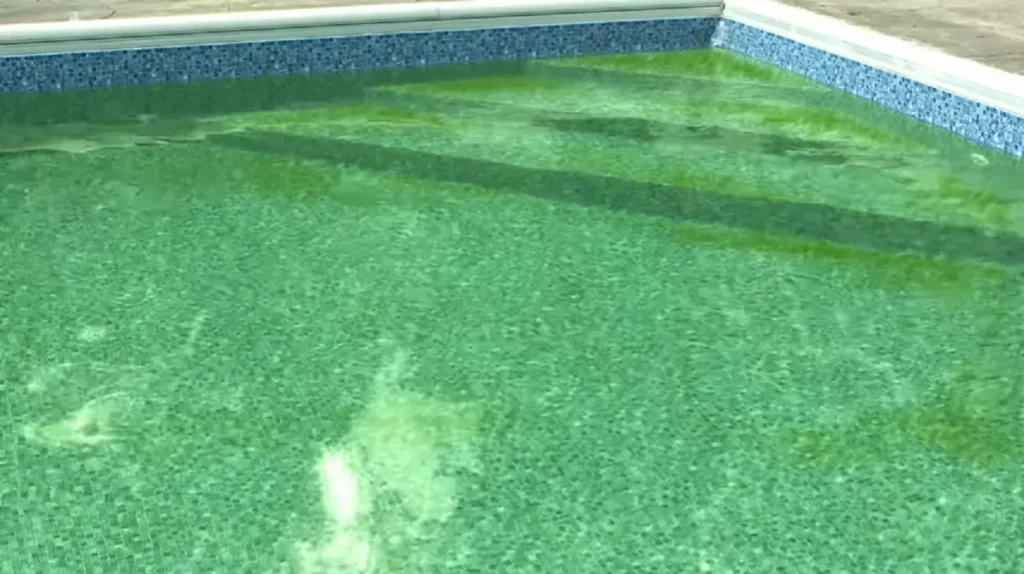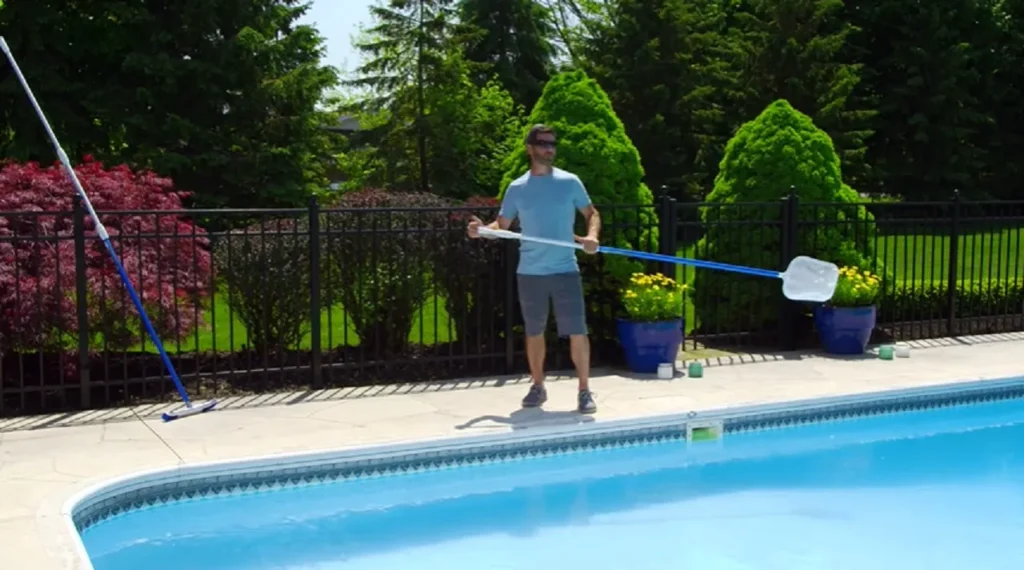Taking care of your pool can be a rewarding experience. Instead of hiring outside help, managing the pool care yourself is feasible with just 30 minutes a week, a little research, and resources like this guide. How about dedicating Wednesdays to pool maintenance? It’s a great way to keep it top of mind and prevent it from slipping through the cracks during busy weeks!
The Three C’s of Pool Care
Taking care of any pool comes down to three C’s: cleaning, circulation, and chemistry. Let’s explore each of these in detail.
1. Cleaning: Maintaining Physical Purity
Pool water, left in its natural state at an ideal temperature, would quickly become uninhabitable. To keep it clean and swimmable, maintaining its physical cleanliness is essential.
- Skimming the Surface: The first step is to regularly clean the top of the pool with a net. This removes leaves and debris. While occasional lapses might not be detrimental, consistent skimming significantly contributes to the overall cleanliness. A skimmer net that effectively captures debris is strongly recommended.
- Brushing the Walls: Brush the walls of the pool weekly, working from top to bottom. A robotic vacuum can be used to clean the bottom of the pool. This device will suck up any debris on the bottom of the pool and prevent algae buildup by scrubbing the pool. If a robot vacuum is not available, you can manually vacuum the bottom with a water vacuum once a week.
2. Skimmer System: Your Second Line of Defense
Most pools are equipped with a skimmer, acting as a second line of defense. It sucks the top layer of water, filtering out leaves, grass, and insects. When accessing the skimmer system, watch out for snakes and spiders. A valve at the bottom of the skimmer prevents it from sucking air if the water level gets too low, which could damage the pump. Empty the skimmer basket weekly. During peak summer heat, maintaining the water level may require about 20 to 30 minutes of hose water each week.
3. Pump Basket Maintenance
After leaving the skimmer, water is drawn into the pool pump basket, which also traps debris. Empty this basket weekly by popping open the pump cover; avoid using your foot as this can crack the cover. The collected debris can be discarded into a garbage can, and the basket can be sprayed with a hose to remove smaller leaves. Expect these baskets to need replacement over time due to constant chlorine exposure.
3.1. Repriming the Pump
After cleaning the pump basket, the pump needs to be reprimed by adding water back. This can be done by pouring a bucket of water into the pump before replacing the lid. Alternatively, releasing the pressure on top of the filter by spinning the pressure gauge will refill the water, allowing for a quick lid replacement.
4. Filter System: Cartridge Filters
All pools have a filter, be it sand, cartridge, or DE. A cartridge filter uses pleated polyester media to filter down to ten microns, catching small microorganisms, pollen, and dirt. Note the baseline pressure in the filter housing, typically around 10 to 15 psi. If it reaches 20 to 25 psi, the cartridge needs cleaning by rinsing it with a hose. If the pressure remains high after cleaning, the filter needs to be replaced. Keep a record of the baseline pressure on the timer box for future comparison.

Circulation: The Heart of a Clean Pool
Circulation is critical for maintaining clean and clear water. Ideally, the pump would run 24/7, but this is often not feasible due to energy costs. Maximizing physical cleaning efforts, such as skimming, maintaining clean skimmers, and utilizing a robot vacuum, can help reduce pump usage. As a guideline, run the pump as much as can be afforded, but never less than about 6 hours a day. Increase the duration by one hour per 10-degree temperature rise in the water. If the pool loses clarity, it indicates the need to increase pump circulation. Aim to circulate the entire pool volume through the filter once a day. In winter, the pump running time can be reduced as temperatures fall, but avoid shutting it off completely unless winterizing the pool.
1. Pump Systems
The pump is the heart of the system. Ensuring its good condition is paramount. A variable-speed pump offers the flexibility to adjust speed based on needs. At full speed, it might consume around 2,000 watts, while at slow speed, it drops to about a thousand watts. The pool described has a chlorine generator (for a saltwater pool), which uses salt to produce chlorine. There’s also a dedicated pump for the robot vacuum and a programmable timer box to control schedules, temperatures, and chlorine output. Automatic valves open and close based on timer box settings, directing water flow as needed. Solar heating extends the pool season by using a sensor on the roof to detect when solar water heating is effective.
2. Protecting Equipment
Spraying PVC pipe with black paint can protect it from UV rays. Additionally, using a UV inhibitor on plastic pool equipment twice a year can prevent sun damage and extend its lifespan.

Chemistry: Balancing the Elements
Pool chemistry can seem intimidating initially, but it’s essential to maintaining clean, safe, and healthy water. Taking a water sample to a local pool store for testing is beneficial, especially when starting out. Electronic chlorine generators might not function accurately at lower water temperatures, so manual chlorine addition may be necessary. Once balanced, maintaining the water becomes easier.
1. Testing the Water
The ideal pH range for a pool is 7.2 to 7.6, alkalinity should be 100 to 150 parts per million, and chlorine should be one to three parts per million. Adding a UV inhibitor helps prevent chlorine from breaking down in the sun. For saltwater pools, occasional salt addition might be needed to compensate for water loss. When adding dry acid, follow the directions carefully, dilute it in a bucket for 24 hours away from pets and people, then slowly pour it into the skimmer while running the pump for 24 hours.